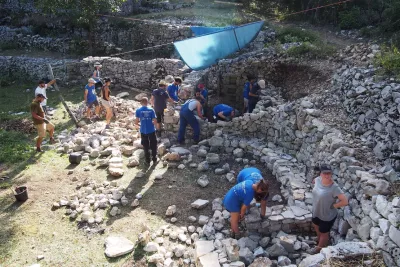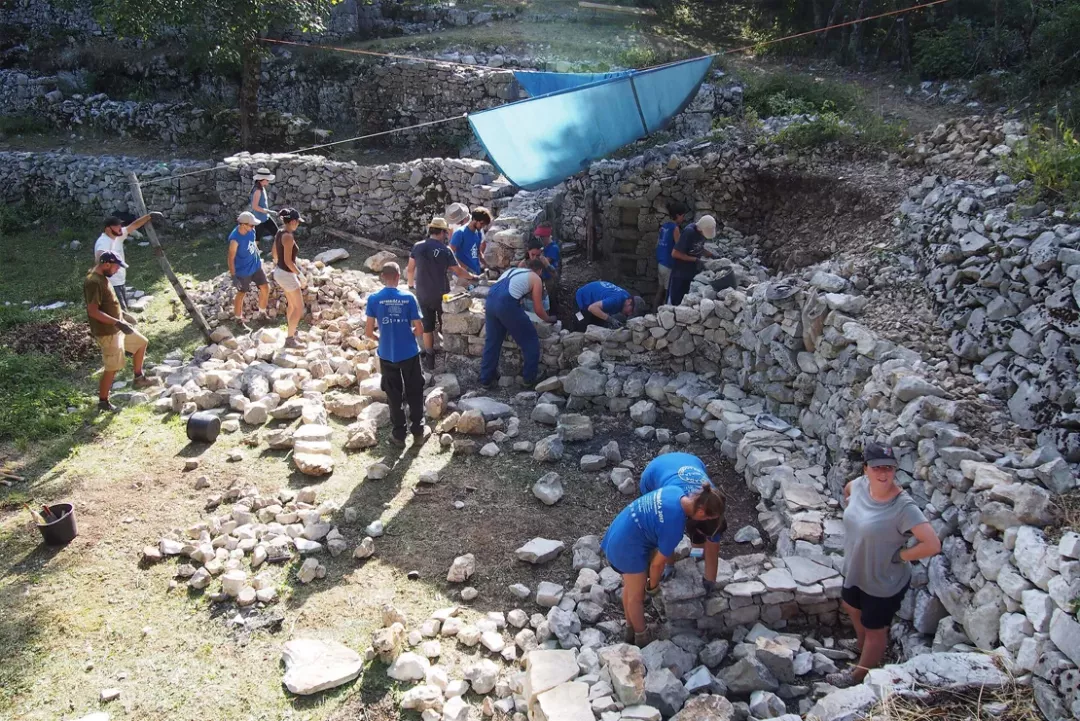Summary
Filip Šrajer tells us that “in the past, building dry stone walls was one of the most widespread skills within the rural population in Croatia” . These walls can act as a habitat for many species and connective landscape feature across a farmed landscape. A Croatian NGO is transferring knowledge and skills to future generations with the aim of re-establishing dry stone walls as an efficient, aesthetic and sustainable option.

Topics
Farmland dry stone walls are man-made linear elements used as field boundaries to restrict livestock movement, to support agricultural terraces or to separate property. They are typically built using stones which have been removed from fields and traditionally they are built of stones only, without the use of mortar. Dry stone walls have many benefits for biodiversity. They provide habitats for plants and animals and are particularly important for lichens, mosses, ferns and invertebrates. Several bird species also use dry stone walls as nesting sites. This is also a high-diversity landscape feature which acts as a corridor between larger areas. Dry stone walls also represent a number of economic benefits for the farmer or landowner. When they are well maintained, they have excellent water drainage capacity and this helps to minimise landslide risks and soil erosion. Furthermore, they are effective windbreaks and can also protect against forest fires that are very common in the coastal areas of Croatia.
Filip Šrajer, PhD, one of the founders of the NGO ‘DRAGODID’, explains: “Dry stone walls are an important part of our heritage in Croatia. They are typical in the Mediterranean coastal region, but they can also be found in some other parts of the country. However, due to an aging population and the abandonment of traditional livestock farming systems, the transfer of traditional know-how was declining, and many walls were not being maintained or managed.”
In response to this, the ‘Association 4 GRADA DRAGODID’ (DRAGODID), an education, training and awareness raising NGO, was set up in 2007. Its main aim is to preserve and promote the knowledge of constructing and maintaining dry stone walls. It organises and manages dry stone wall workshops and carries out research into dry stone wall heritage in cooperation with local partners in Croatia and neighbouring countries of the eastern Adriatic. It has a team of volunteers who are mostly young professionals and students from sectors such as landscape architecture and agriculture.
Dry stone walls are important to the local population and also have social and cultural benefits. In fact, the ‘Art of dry stone walling, knowledge and techniques’ was added in 2018 to the Representative List of the Intangible Cultural Heritage of HumanityOpen link in new window (UNESCO). Julia Bakota Švencbir, coordinator of DRAGODID, says: “This brought a lot of attention and social recognition. It is also a traditional practice in other EU countries such as Italy, Ireland, Spain, Switzerland, Greece, Cyprus, France and Slovenia, and many others.” DRAGODID therefore focuses on the acknowledgement of skills of local master builders and the transfer of their knowledge to younger generations. Julia explains that “in order to do this, we organise local events on the subject of dry stone walls, including workshops, student camps and case study site visits. This also caught the interest of tourists, and so we began to think about organising guided tours”.
The new CAP plan in Croatia offers a voluntary payment (agri-environment-climate commitments) for preservation of landscape features, including the preservation of dry stone walls. Julia explains: “Although newly introduced agri-environment payments provide compensation, further research is needed in terms of identifying and monetising the benefits from the ecosystem services by dry stone walls.”
DRAGODID has written a manual on dry stone wall heritage and construction skills, which includes a step-by-step guide for the construction and renovation of different types of dry stone walls. The NGO also coordinates and maintains an open public inventory of Croatian dry stone wall heritage sites. They have also participated in EU-funded projects, including Erasmus+ and LIFE, to share knowledge across Europe.
Julia Bakota Švecbir says: “Now for over 15 years, DRAGODID, along with other organisations and individuals, have been working on the protection and maintenance of dry stone walls, ensuring the transfer of skills to future generations. This ties in with a sense of pride regarding a cultural heritage which we believe is worth protecting as it brings about so many benefits for local people, tourism, the economy, biodiversity, culture and more.”
Julia Bakota Švencbi
Coordinator

